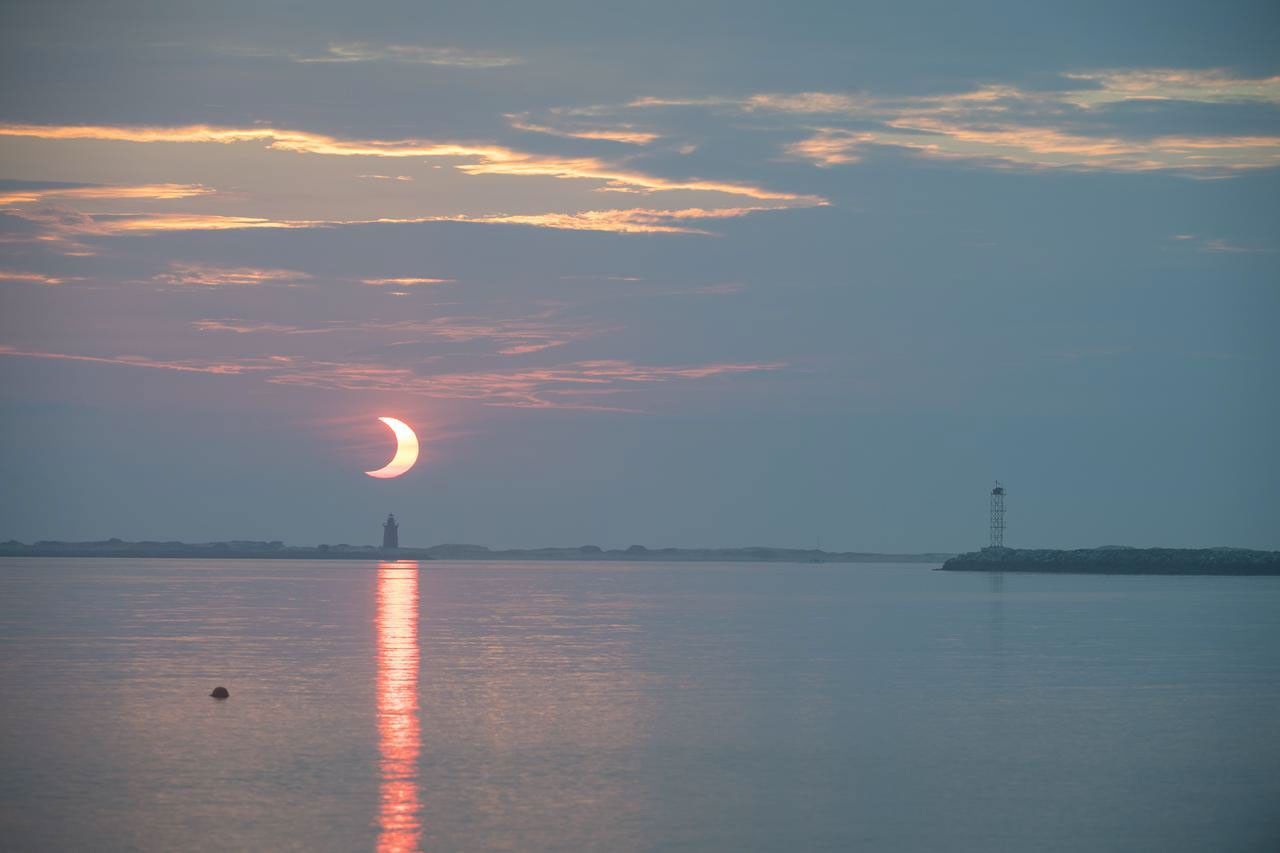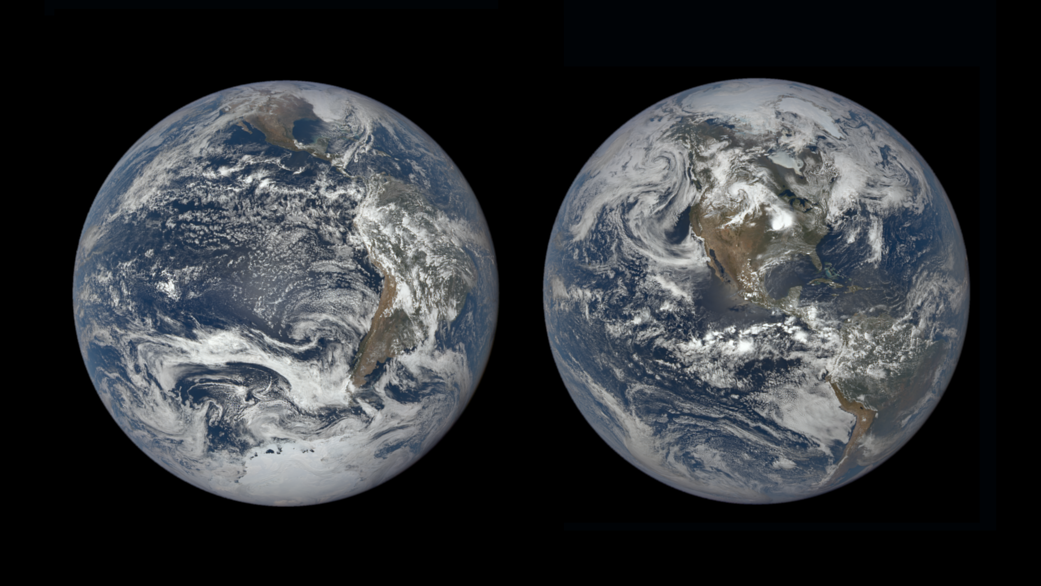June 20, 2021, marks the summer solstice — the beginning of astronomical summer — in the Northern Hemisphere.
Earth orbits at an angle, so half the year, the Northern Hemisphere is tilted toward the Sun — this is summer in the Northern Hemisphere, and winter in the Southern Hemisphere. The other half of the year, the Northern Hemisphere is tilted away from the Sun, creating winter in the north and summer in the south.
Solstices happen twice per year, at the points in Earth’s orbit where this tilt is most pronounced. These days are the longest (in the summer hemisphere) and shortest (in the winter hemisphere) of the year, and mark the change of seasons to summer and winter, respectively.
Image: These views, captured from the Sun-facing side of Earth, show the change in Earth’s tilt between the December (left) and June (right) solstices. These images were taken by NASA’s Earth Polychromatic Imaging Camera on the National Oceanic and Atmospheric Administration’s DSCOVR satellite in December 2018 and June 2019. Credits: NASA/DSCOVR EPIC
By Sarah Frazier & Katy MersmannNASA’s Goddard Space Flight Center, Greenbelt, Md.





























